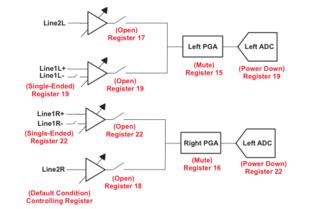tc编程教程
Title: Understanding TLV (TagLengthValue) Encoding in Programming
TLV (TagLengthValue) encoding is a widely used method for structuring data in various communication protocols and file formats. It provides a flexible way to represent information by organizing it into three components: a tag, a length, and the actual value. Let's delve deeper into TLV encoding, its significance, and how it's implemented in programming.
1. Understanding TLV Encoding:
TLV encoding is a method of structuring data into packets or blocks, each consisting of three fields:
Tag:
A unique identifier that specifies the type of data.
Length:
The number of bytes in the value field.
Value:
The actual data being transmitted or stored. 2. Significance of TLV Encoding:
TLV encoding offers several advantages:
Flexibility:
It can accommodate various types of data without the need for predefined structures.
Efficiency:
The length field allows for variablelength data, optimizing storage and transmission.
Interoperability:
TLV is a widely recognized format, facilitating communication between different systems and devices. 3. Implementation in Programming:
Here's a basic example of how TLV encoding can be implemented in programming, using Python as an illustration:
```python
def encode_tlv(tag, value):
length = len(value)
encoded = tag.to_bytes(1, 'big') length.to_bytes(2, 'big') value
return encoded
def decode_tlv(encoded):
tag = encoded[0]
length = int.from_bytes(encoded[1:3], 'big')
value = encoded[3:3 length]
return tag, value
Example Usage:
tag = 1
value = b"Hello, TLV!"
encoded_data = encode_tlv(tag, value)
decoded_tag, decoded_value = decode_tlv(encoded_data)
print("Decoded Tag:", decoded_tag)
print("Decoded Value:", decoded_value.decode('utf8'))
```
In this example:
`encode_tlv()` function takes a tag and value, calculates the length, and creates the TLVencoded data.
`decode_tlv()` function reverses the process, extracting the tag, length, and value from the encoded data.
4. Best Practices and Considerations:
Tag Selection:
Choose tags carefully to avoid conflicts and ensure interoperability.
Error Handling:
Implement robust error handling to deal with malformed or unexpected data.
Security:
Consider encryption and authentication mechanisms to secure TLVencoded data, especially in sensitive applications. 5. Use Cases:
TLV encoding finds applications in various domains, including:
Network Protocols:
Used in protocols like SNMP (Simple Network Management Protocol) for data representation.
Smart Cards:
Commonly employed in EMV (Europay, Mastercard, Visa) payment cards for storing transaction data.
File Formats:
Utilized in formats like BER (Basic Encoding Rules) for encoding ASN.1 (Abstract Syntax Notation One) data.Conclusion:

TLV encoding is a versatile and efficient method for organizing data in programming. By understanding its principles and implementing it effectively, developers can build robust and interoperable systems across diverse domains.
This HTML document provides a comprehensive overview of TLV (TagLengthValue) encoding, covering its definition, significance, implementation in programming, best practices, use cases, and conclusion. Whether you're a beginner or an experienced developer, this guide equips you with the knowledge to leverage TLV encoding effectively in your projects.
本文 新鼎系統网 原创,转载保留链接!网址:https://acs-product.com/post/14716.html
免责声明:本网站部分内容由用户自行上传,若侵犯了您的权益,请联系我们处理,谢谢!联系QQ:2760375052 版权所有:新鼎系統网沪ICP备2023024866号-15








